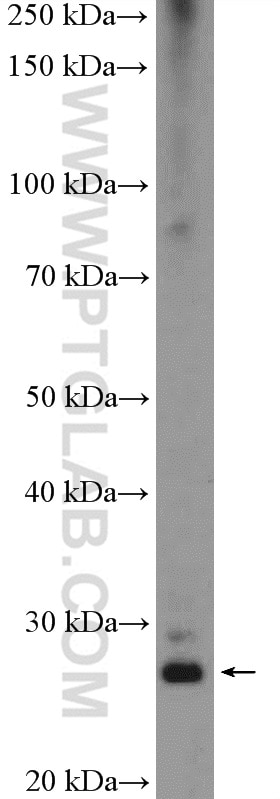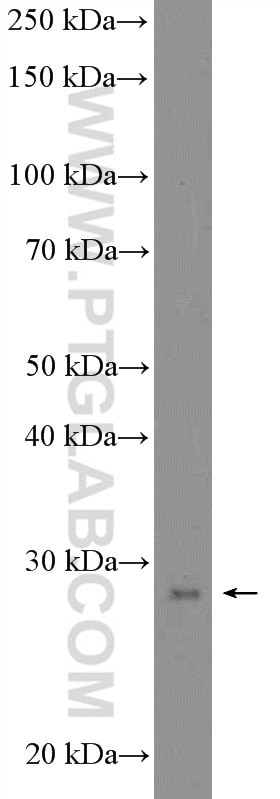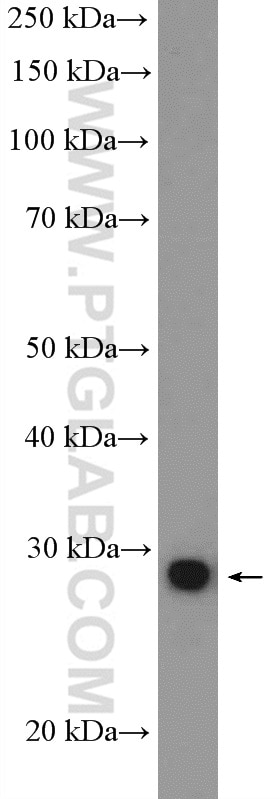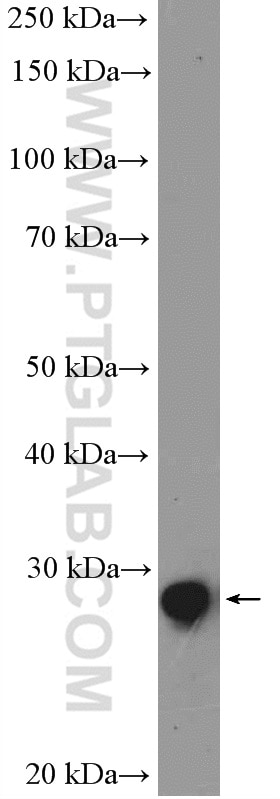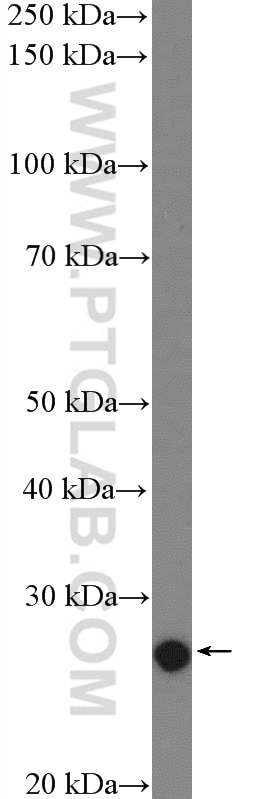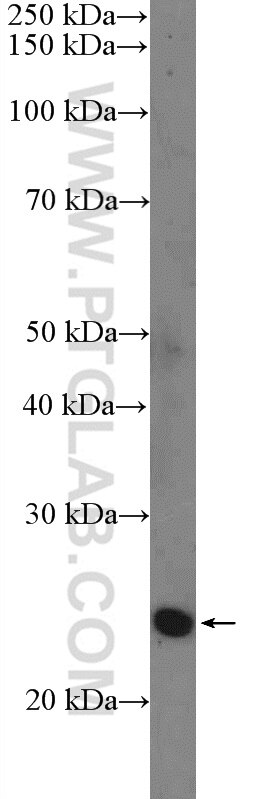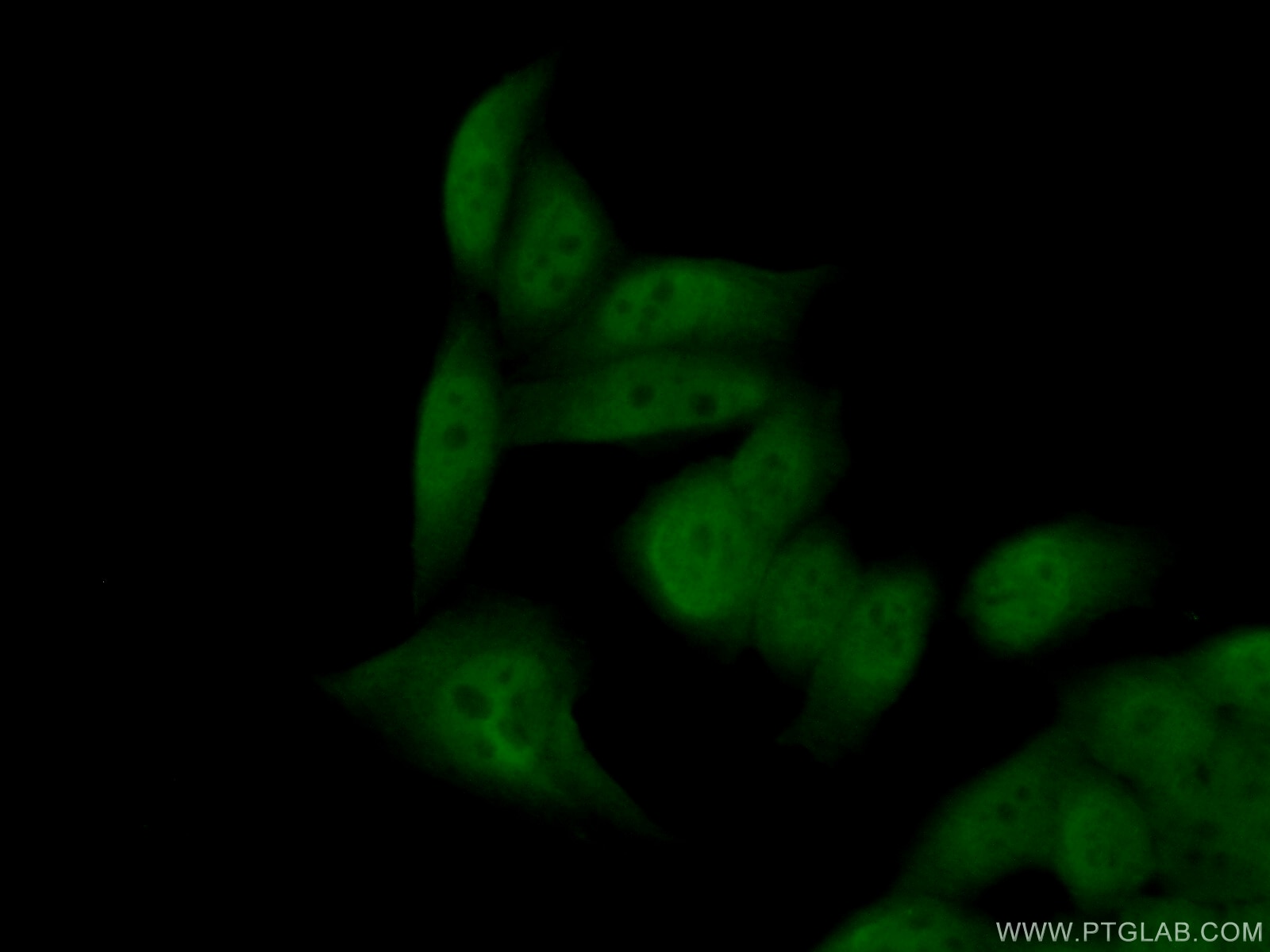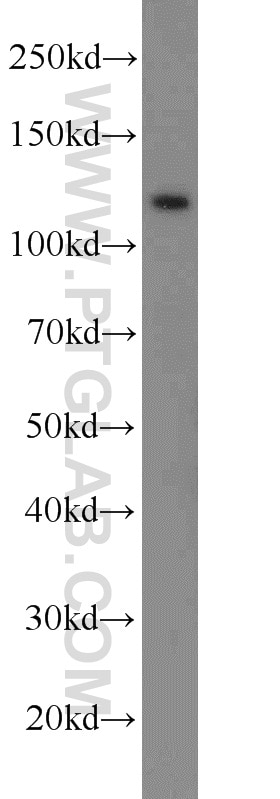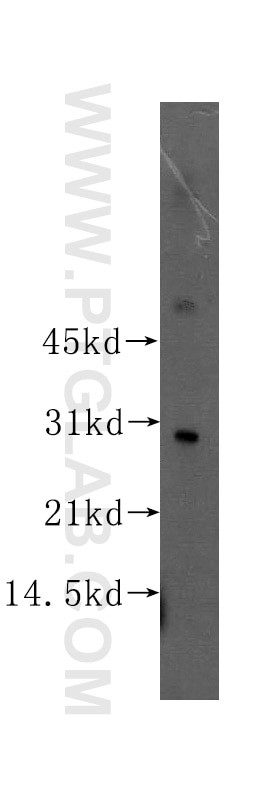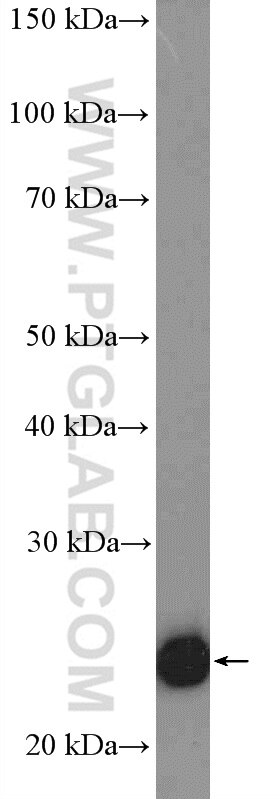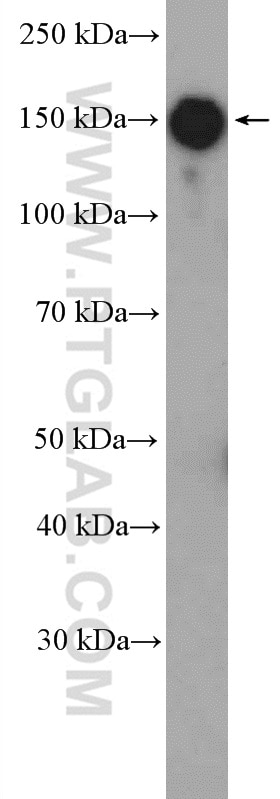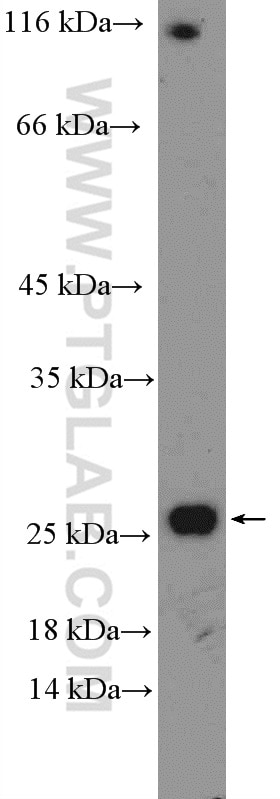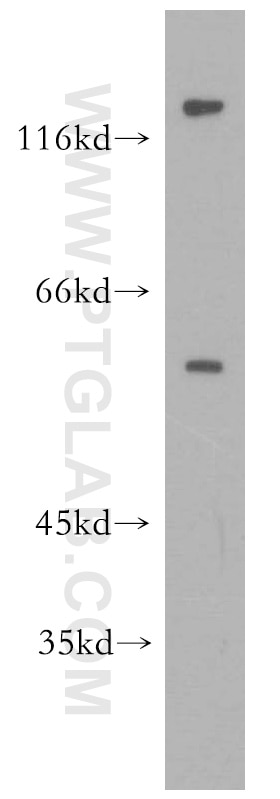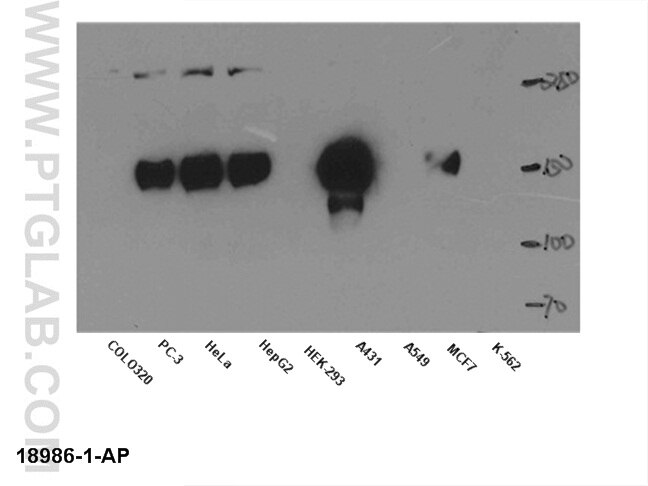Anticorps Polyclonal de lapin anti-SNAI1
SNAI1 Polyclonal Antibody for IF, WB, ELISA
Hôte / Isotype
Lapin / IgG
Réactivité testée
Humain, souris
Applications
WB, IP, IHC, IF, CoIP, ELISA
Conjugaison
Non conjugué
N° de cat : 26183-1-AP
Synonymes
Galerie de données de validation
Applications testées
| Résultats positifs en WB | cellules HeLa, cellules NIH/3T3, cellules PC-3 |
| Résultats positifs en IF | cellules HeLa |
Dilution recommandée
| Application | Dilution |
|---|---|
| Western Blot (WB) | WB : 1:500-1:2000 |
| Immunofluorescence (IF) | IF : 1:50-1:500 |
| It is recommended that this reagent should be titrated in each testing system to obtain optimal results. | |
| Sample-dependent, check data in validation data gallery | |
Applications publiées
| WB | See 19 publications below |
| IHC | See 3 publications below |
| IF | See 2 publications below |
| IP | See 1 publications below |
| CoIP | See 1 publications below |
Informations sur le produit
26183-1-AP cible SNAI1 dans les applications de WB, IP, IHC, IF, CoIP, ELISA et montre une réactivité avec des échantillons Humain, souris
| Réactivité | Humain, souris |
| Réactivité citée | Humain, souris |
| Hôte / Isotype | Lapin / IgG |
| Clonalité | Polyclonal |
| Type | Anticorps |
| Immunogène | SNAI1 Protéine recombinante Ag24248 |
| Nom complet | snail homolog 1 (Drosophila) |
| Masse moléculaire calculée | 264 aa, 29 kDa |
| Poids moléculaire observé | 29-35 kDa |
| Numéro d’acquisition GenBank | BC012910 |
| Symbole du gène | SNAI1 |
| Identification du gène (NCBI) | 6615 |
| Conjugaison | Non conjugué |
| Forme | Liquide |
| Méthode de purification | Purification par affinité contre l'antigène |
| Tampon de stockage | PBS avec azoture de sodium à 0,02 % et glycérol à 50 % pH 7,3 |
| Conditions de stockage | Stocker à -20°C. Stable pendant un an après l'expédition. L'aliquotage n'est pas nécessaire pour le stockage à -20oC Les 20ul contiennent 0,1% de BSA. |
Informations générales
SNAI1, a member of SNAI1 family of protein, participates in the epithelial to mesenchymal transition(EMT) and formation and maintenance of embryonic mesoderm. The snail family share a common structural, that a highly conserved C-terminal region containing a zinc finger transcription factor. SNAI1 interacts with other corepressor, such as Ajuba, PRMT5 and SIN3a or HDAC1 and 2, to repress the target gene. As the phosphorylation modification of SNAI1 protein, the range of molecular weight of SNAI1 is about 25-30 kDa (PMID: 22276203 ). Once phosphorylated (probably on Ser-107, Ser-111, Ser-115 and Ser-119) it is exported from the nucleus to the cytoplasm where subsequent phosphorylation of the destruction motif and ubiquitination involving BTRC occurs.
Protocole
| Product Specific Protocols | |
|---|---|
| WB protocol for SNAI1 antibody 26183-1-AP | Download protocol |
| IF protocol for SNAI1 antibody 26183-1-AP | Download protocol |
| Standard Protocols | |
|---|---|
| Click here to view our Standard Protocols |
Publications
| Species | Application | Title |
|---|---|---|
Oxid Med Cell Longev XPO1-Mediated EIF1AX Cytoplasmic Relocation Promotes Tumor Migration and Invasion in Endometrial Carcinoma | ||
Aging (Albany NY) Membrane-cytoplasm translocation of annexin A4 is involved in the metastasis of colorectal carcinoma. | ||
Front Cell Dev Biol Targeting MALT1 Suppresses the Malignant Progression of Colorectal Cancer via miR-375/miR-365a-3p/NF-κB Axis. | ||
Oncotarget AEG-1/MTDH-activated autophagy enhances human malignant glioma susceptibility to TGF-β1-triggered epithelial-mesenchymal transition. | ||
J Cell Mol Med Autophagy promotes fibrosis and apoptosis in the peritoneum during long-term peritoneal dialysis. | ||
Cancer Manag Res AOC1 Contributes to Tumor Progression by Promoting the AKT and EMT Pathways in Gastric Cancer. |
